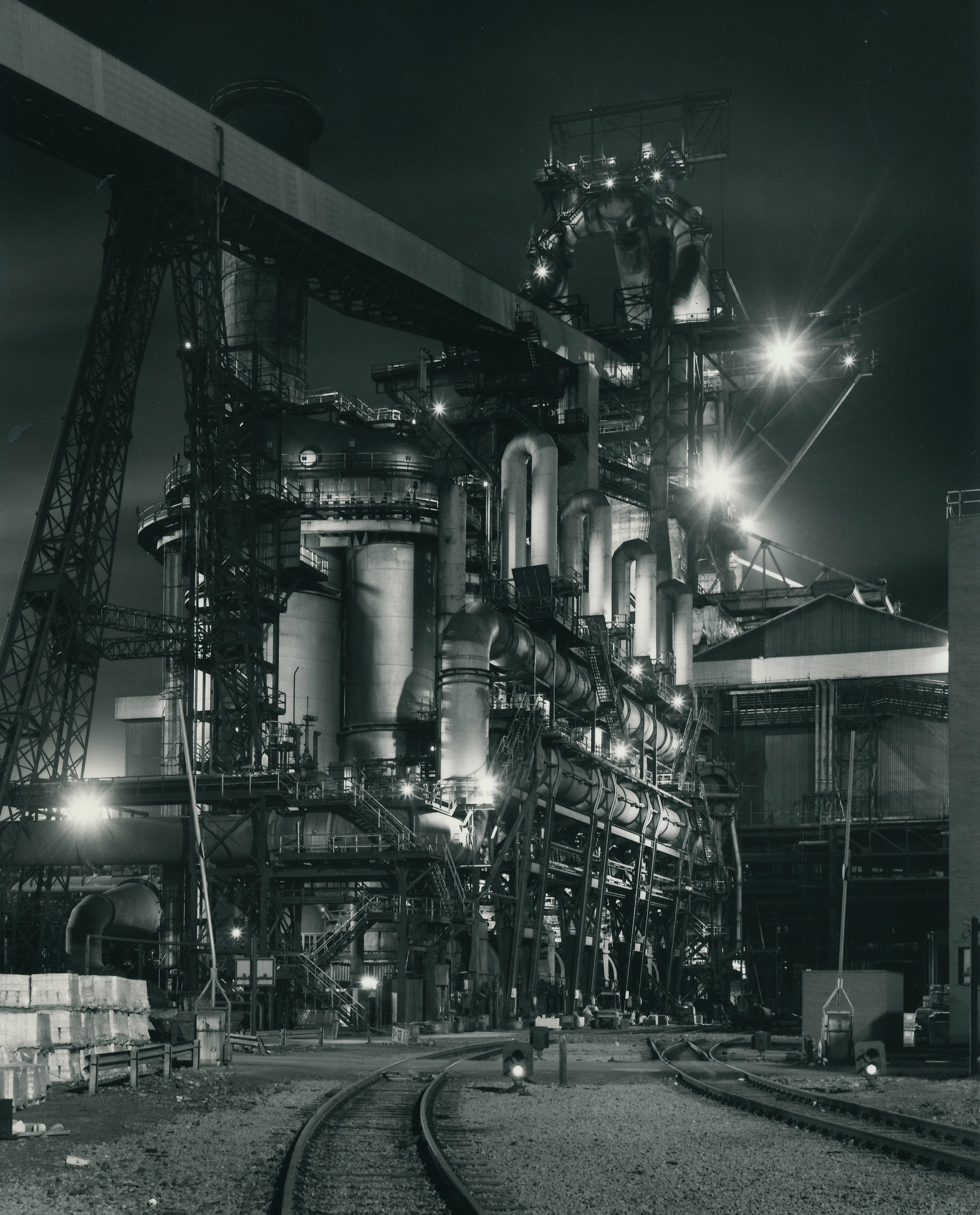“Two of the most obvious things about photographs intrigue me, their stillness and silence; these are for me also their major strengths. Photographs, being silent and still, preclude reality other than in that most superficial sense of the representation of an apparent likeness. In precluding reality they fall into the realm of myth, where everyone is free to invent by association as they see fit, for the meaning of each photograph is conditioned by those personal experiences the onlooker takes to viewing each image.”
- Ian Macdonald
Blast Furnace at night by Ian Macdonald
Ian Macdonald (b. 1946) is an internationally acclaimed photographer born and raised in Middlesbrough, Yorkshire, UK. He studied Graphic Design and Printmaking at Teesside College of Art in 1968 and went on to study Painting and Photography at Sheffield School of Art, Photography and Graphic Design at Birmingham Polytechnic and Education at Lancaster University. He pursued Photography alongside drawing – his first love -, painting and printmaking that made up the whole of his discipline.
Since 1968, Ian Macdonald has consistently photographed the people and places of Teesside, one of Europe’s most heavily industrialised area in the Northeast of England. His love of the region, the beauty of the landscape – great expanses of wildness nestling among industrial settings - and his solid admiration for the people working and living amongst this environment has resulted in a completely honest and passionate depiction of a place and its community.
Much of the cultural heritage in Teesside has been built on over 170 years of iron making in blast furnaces, but the economic downturn has resulted in a broader lack of hope for the community’s future. This notion of irreversible change and future uncertainty is present in Macdonald’s portraits of the local artisans – the last of their breed. It is written on the faces of these dignified tradesmen, shipwrights, river pilots and blast-furnace men.
A thick steel plate, raised thirty three inches above floor level on a hard wood block, used by riggers in the shipyard to bray out new fittings to steel wire hawsers by Ian Macdonald
“The most successful of my photographs seem to be a product of an exploration into my environment and the people I live and work amongst and an excitement generated in me by what I confront. Sometimes by-product would seem a more appropriate term, because only rarely do images really come near to saying anything about the strength, humour, vitality, atmosphere, pathos and despair which seems to make up what goes on around us all. Always, I am spurred on by a tingling sensation at the possibility, this time, perhaps, the image may really say something”.
- Ian Macdonald
Macdonald’s defensive, backward-looking view is well-served by his detailed photographic technique. He uses a large format plate camera, which requires setting up, time-consuming tinkering with compositions and so forth, while he meticulously creates his exquisite silver gelatin prints by hand. As a result, many of his interpretations of quayside machinery and portraits of locals resemble 19th century photographic icons, such as P.H. Emerson.
Macdonald’s work has been included in various publications, such as ‘England Gone’, ‘Smith’s Dock Shipbuilders’, ‘Images of the Tees’, ‘Eton’ and ‘The Blast Furnace’. His work has been exhibited internationally and is included in many private and public Photography Collections around the world, such as the Victoria & Albert Museum, the Danish Royal Library, the Navigator Foundation in Boston.













